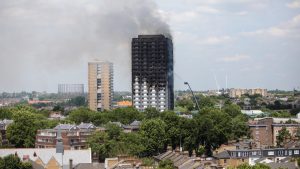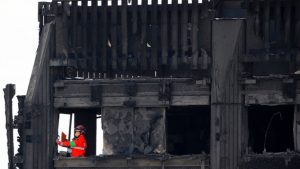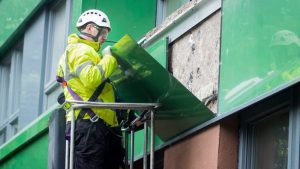Data Protection and CCTV

The use of CCTV systems has greatly expanded in recent years. So has the sophistication of such systems. Systems now on the market have the capacity to recognise faces. They may also be capable of recording both images and sounds.
The expanded use of CCTV systems has society-wide implications. Unless such systems are used with proper care and consideration, they can give rise to concern that the individual’s “private space” is being unreasonably invaded.
Recognisable images captured by CCTV systems are personal data“. They are therefore subject to the provisions of the Data Protection Acts. A data controller needs to be able to justify the obtaining and use of personal data by means of a CCTV system. A system used to control the perimeter of a building for security purposes will usually be easy to justify. The use of CCTV systems in other circumstances – for example, to constantly monitor employees, customers or students – can be more difficult to justify and could involve a breach of the Data Protection Acts
Proportionality – is a CCTV system justified?
Section 2(1)(c)(iii) of the Acts require that data are “adequate, relevant and not excessive” for the purpose for which they are collected. This means that an organisation must be able to demonstrate that the serious step involved in installing a system that collects personal data on a continuous basis is justified. Before proceeding with such a system, it should also be certain that it can meet its obligations to provide data subjects, on request, with copies of images captured by the system.
Proportionality – what will the system be used for?
If a data controller is satisfied that it can justify installing a CCTV system, it must consider what it will be used for and if these uses are reasonable in the circumstances.
Security of premises or other property is probably the most common use of a CCTV system. Such a system will typically be intended to capture images of intruders or of individuals damaging property or removing goods without authorisation. Such uses are more likely to meet the test of proportionality.
Other uses may fail the test of proportionality. For example, using a CCTV system to constantly monitor employees is highly intrusive and would need to be justified by reference to special circumstances. If the monitoring is for health and safety reasons, a data controller would need to demonstrate that the installation of CCTV was proportionate in addressing health and safety issues that had arisen prior to the installation of the system.
Proportionality – what images will be captured?
The location of cameras is a key consideration. Use of CCTV to monitor areas where individuals would have a reasonable expectation of privacy would be difficult to justify. Toilets and rest rooms are an obvious example. To justify use in such an area, a data controller would have to demonstrate that a pattern of security breaches had occurred in the area prior to the installation of the system such as would warrant constant electronic surveillance. Where such use can be justified, the CCTV cameras should never be capable of capturing images from cubicles or urinal areas.
Cameras placed so as to record external areas should be positioned in such a way as to prevent or minimise recording of passers-by or of another person’s private property.
Proportionality – Recommendations
Under this principle, this Office would expect that a data controller would have carried out detailed assessments as to how the use of such equipment meets with these requirements and would have the following steps carried out and documented:
- A Risk Assessment
- A Privacy Impact Assessment
- A Specific Data Protection policy drawn up for use of the devices in a limited and defined set of circumstances only (this policy should include documented data retention and disposal policy for the footage)
- Documentary evidence of previous incidents giving rise to security/health and safety concerns
- Clear signage indicating image recording in operation.
Transparency
Section 2D of the Acts requires that certain essential information is supplied to a data subject before any personal data are recorded.
A written CCTV policy must be in place and should include the following information;
- the identity of the data controller;
- the purposes for which data are processed;
- any third parties to whom the data may be supplied.
- How to make an access request (see “Access Requests” section below)
- Retention period for CCTV (see “Storage and Retention” section below)
- Security arrangements for CCTV (see “Storage and Retention” section below)
Notification of CCTV usage can usually be achieved by placing easily- read and well-lit signs in prominent positions. A sign at all entrances will normally suffice.
If the identity of the data controller and the usual purpose for processing – security – is obvious, all that need be placed on the sign is a statement that CCTV is in operation as well as a contact (such as a phone number) for persons wishing to discuss this processing. This contact can be for either the security company operating the cameras or the owner of the premises.
If the purpose or purposes is not obvious, there is a duty on the data controller to make this clear. A CCTV camera in a premises is often assumed to be used for security purposes. Use for monitoring staff performance or conduct is not an obvious purpose and staff must be informed before any data are recorded for this purpose. Similarly, if the purpose of CCTV is also for health and safety reasons, this should be clearly stated and made known.
Storage and retention.
Section 2(1)(c)(iv) of the Data Protection Acts states that data “shall not be kept for longer than is necessary for” the purposes for which they were obtained. A data controller needs to be able to justify this retention period. For a normal security system, it would be difficult to justify retention beyond a month, except where the images identify an issue – such as a break-in or theft – and is retained specifically in the context of an investigation of that issue.
The storage medium should be stored in a secure environment with a log of access kept. Access should be restricted to authorised personnel.
Supply of CCTV Images to An Garda Síochána
With regard to requests from An Garda Síochána to download footage, the ODPC recommends that requests for copies of CCTV footage should only be acceded to where a formal written (or fax) request is provided to the data controller stating that An Garda Síochána is investigating a criminal matter. For practical purposes, and to expedite a request speedily in urgent situations, a verbal request may be sufficient to allow for the release of the footage sought. However, any such verbal request must be followed up with a formal written request. It is recommended that a log of all An Garda Síochána requests is maintained by data controllers and processors.
As outlined in the audit report of An Garda Síochána conducted by the Office of the Data Protection Commissioner
“The Office considers that, given that CCTV is obtained using a specific permissive clause of the Acts, requests for downloads of CCTV footage made by An Garda Síochána to third parties should be followed up in writing at all times. Any such requests should be on An Garda Síochána headed paper, quote the details of the CCTV footage required and should also cite the legal basis for the request i.e. Section 8(b) of the Acts. ” (p.76)
There is a distinction between a request by An Garda Síochána to view CCTV footage and to download copies of CCTV footage. In general, An Garda Síochána making a request to simply view footage on the premises of a data controller or processor would not raise any specific concerns from a data protection perspective.
Access Requests
Any person whose image is recorded on a CCTV system has a right to seek and be supplied with a copy of their own personal data from the footage. To exercise that right, a person must make an application in writing. The data controller may charge up to €6.35 for responding to such a request and must respond within 40 days.
When making an access request for CCTV footage, the requester should provide the data controller with a reasonable indication of the timeframe of the recording being sought – i.e. they should provide details of the approximate time and the specific date(s) on which their image was recorded. For example, it would not suffice for a requester to make a very general request saying that they want a copy of all CCTV footage held on them. Instead, it is necessary to specify that they are seeking a copy of all CCTV footage in relation to them which was recorded on a specific date between certain hours at a named location. Obviously, if the recording no longer exists on the date on which the data controller receives the access request, it will not be possible to get access to a copy. Requesters should be aware that CCTV footage is usually deleted within one month of being recorded.
For the data controller’s part, the obligation in responding to the access request is to provide a copy of the requester’s personal information. This normally involves providing a copy of the footage in video format. In circumstances where the footage is technically incapable of being copied to another device, or in other exceptional circumstances, it is acceptable to provide stills as an alternative to video footage. Where stills are supplied, it would be necessary to supply a still for every second of the recording in which the requester’s image appears in order to comply with the obligation to supply a copy of all personal data held.
Where images of parties other than the requesting data subject appear on the CCTV footage the onus lies on the data controller to pixelate or otherwise redact or darken out the images of those other parties before supplying a copy of the footage or stills from the footage to the requestor. Alternatively, the data controller may seek the consent of those other parties whose images appear in the footage to release an unedited copy containing their images to the requester
Where a data controller chooses to use technology to process personal data, such as a CCTV system to capture and record images of living individuals, they are obliged to shoulder the data protection obligations which the law places on them for such data processing. In the matter of access requests for CCTV footage, data controllers are obliged to comply fully with such requests. Claims by a data controller that they are unable to produce copies of footage or that stills cannot be produced from the footage are unacceptable excuses in the context of dealing with an access request. In short, where a data controller uses a CCTV system to process personal data, its takes on and is obliged to comply with all associated data protection obligations.
Covert surveillance.
The use of recording mechanisms to obtain data without an individual’s knowledge is generally unlawful. Covert surveillance is normally only permitted on a case by case basis where the data are kept for the purposes of preventing, detecting or investigating offences, or apprehending or prosecuting offenders. This provision automatically implies that a written specific policy be put in place detailing the purpose, justification, procedure, measures and safeguards that will be implemented with the final objective being, an actual involvement of An Garda Síochána or other prosecution authorities for potential criminal investigation or civil legal proceedings being issued, arising as a consequence of an alleged committal of a criminal offence(s).
Covert surveillance must be focused and of short duration. Only specific (and relevant) individuals/locations should be recorded. If no evidence is obtained within a reasonable period, the surveillance should cease.
If the surveillance is intended to prevent crime, overt cameras may be considered to be a more appropriate measure, and less invasive of individual privacy.
Responsibilities of security companies.
Security companies that place and operate cameras on behalf of clients are considered to be “Data Processors”. As data processors, they operate under the instruction of data controllers (their clients). Sections 2(2) and 2C of the Data Protection Acts place a number of obligations on data processors.
These include having appropriate security measures in place to prevent unauthorised access to, or unauthorised alteration, disclosure or destruction of, the data, in particular where the processing involves the transmission of data over a network, and against all unlawful forms of processing. This obligation can be met by having appropriate access controls to image storage or having robust encryption where remote access to live recording is permitted.
Staff of the security company must be made aware of their obligations relating to the security of data.
Clients of the security company should have a contract in place which details what the security company may do with the data; what security standards should be in place and what verification procedures may apply.
Domestic use of CCTV systems.
The processing of personal data kept by an individual and concerned solely with the management of his/her personal, family or household affairs or kept by an individual for recreational purposes is exempt from the provisions of the Acts. This exemption would generally apply to the use of CCTVs in a domestic environment. However, the exemption may not apply if the occupant works from home. [ Where the exemption does apply, a person who objects to the use of a CCTV system – for example, a neighbour who objects to images of her/his property being recorded – may be able to take a civil legal action based on the Constitutional and Common Law right to privacy.] It should be noted that recording of a public space, even partially, or when recording is directed outwards from the private setting, it may not be regarded as a ‘personal or household’ activity for the purposes of the Data Protection Acts, and this may have immediate and particular interest to drone operators and data controllers.
Reference: ECJ Ruling on household exemption C-212/13 – Ryneš
Community CCTV Schemes
Section 38 of the Garda Síochána Act 2005, provides for the installation of CCTV systems for public security purposes under the authority of the Garda Commissioner.
Some Case Studies relevant to this topic:
The following Case Studies, which have appeared in Annual reports of the Data Protection Commissioner over recent years, may be of some interest. Click on the Case Study details to see the full text.
CASE STUDY 3/07– Inappropriate use of CCTV footage by Leisure Club
CASE STUDY 6/07– Data Controller breaches Data Protection Law in regard to covert use of CCTV footage
CASE STUDY 11/06– Failure to comply with an Access Request for CCTV footage
CASE STUDY 8/05– CCTV cameras on the Luas line
source https://www.dataprotection.ie/docs/Data-Protection-CCTV/m/242.htm




